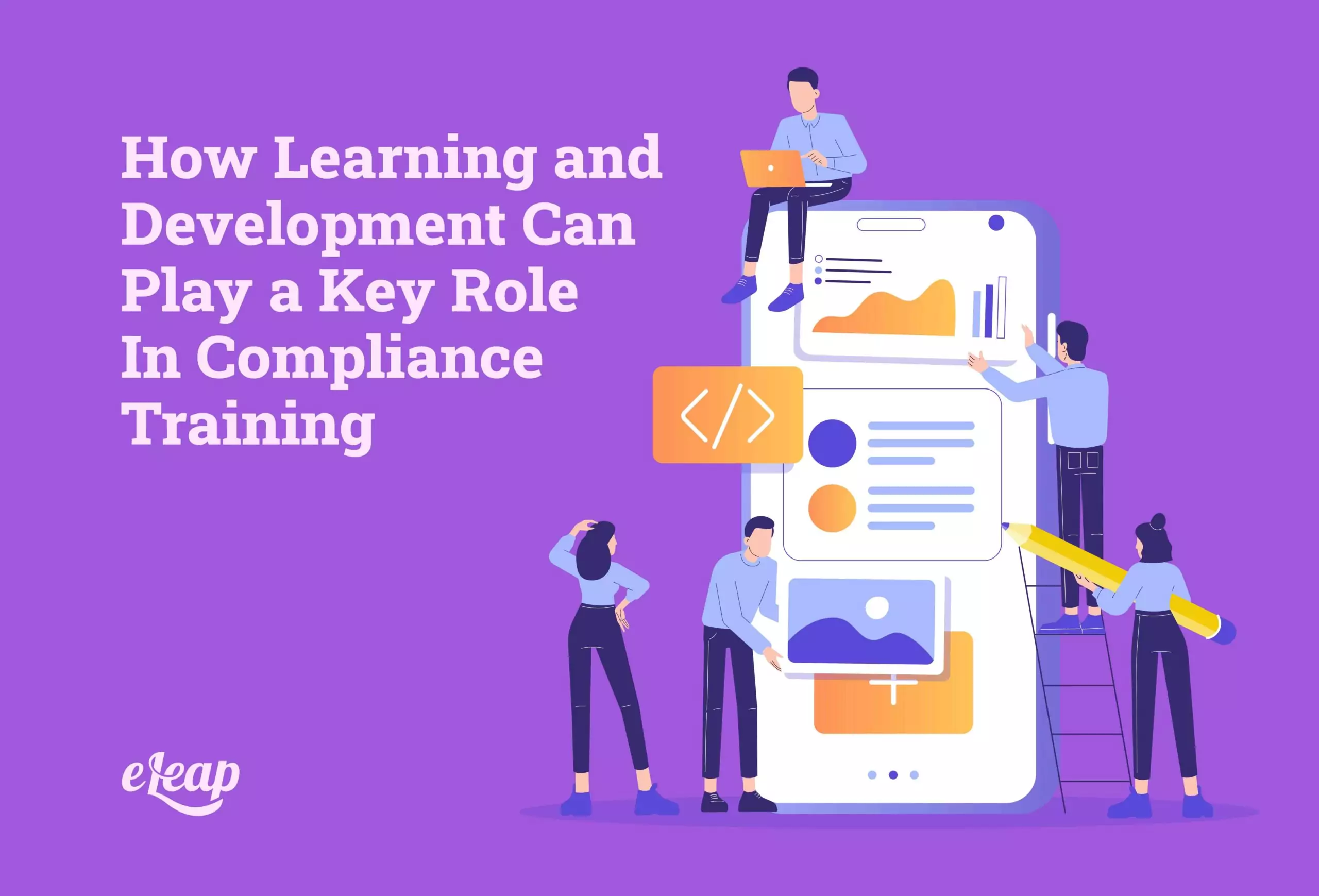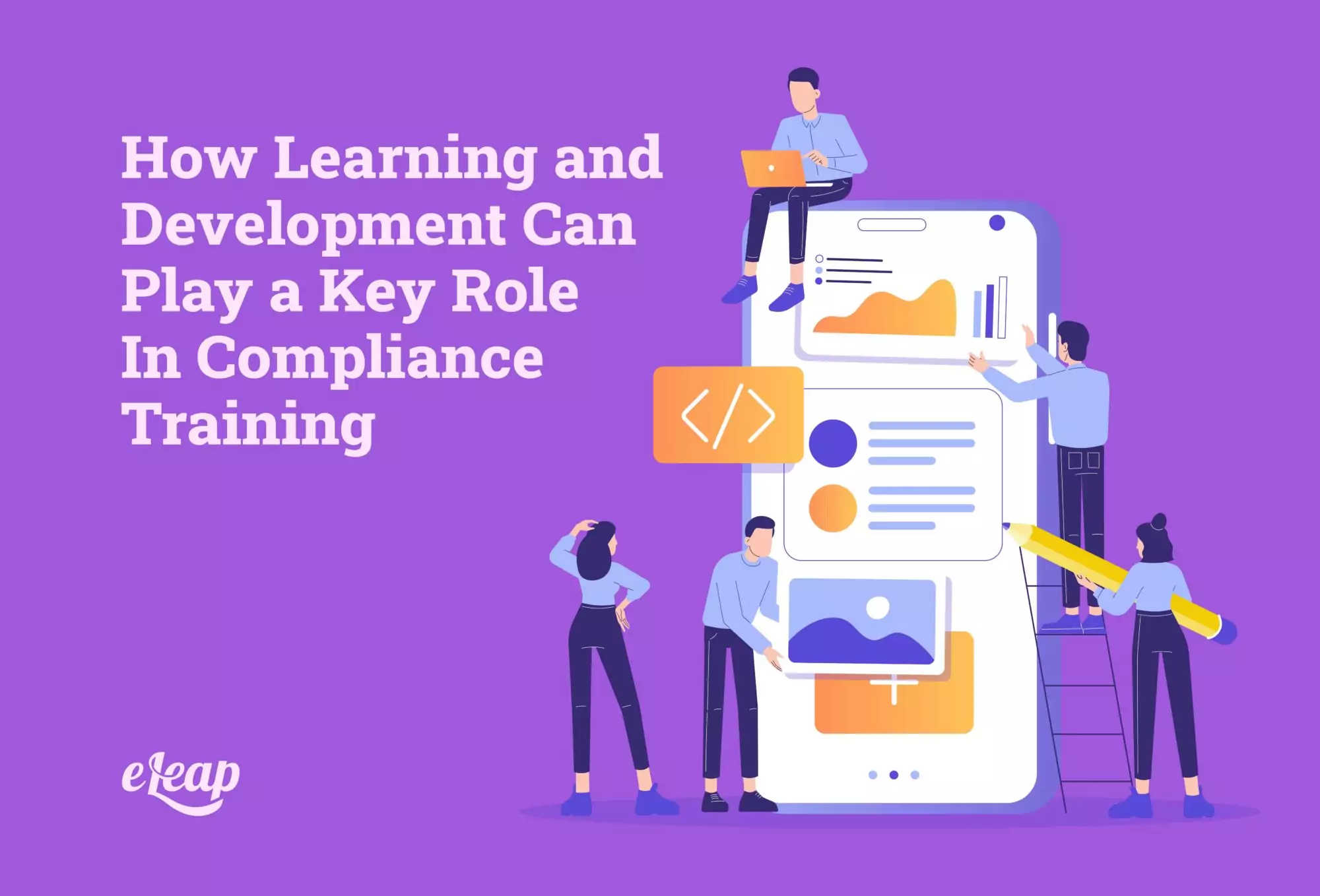How Learning and Development Can Play a Key Role In Compliance Training

In a world that seems to be changing faster as each day passes, you must become efficient at focusing on the constants. You want to set yourself up for the lowest amount of risk possible.
When you’re on the hook for compliance training, every portion of the process is going to be heavily scrutinized by regulatory agencies. Whenever you’re having challenges with a lack of engagement or pass-rates for your compliance training, you’re turning what should be a constant into another risk.
We’re not sure if any organization can afford to do this, no matter how financially secure they are and what their revenue stream looks like. This is especially true in a pandemic world, where attempting to make predictions and navigate uncertainty is already difficult enough.
While team members continue to press forward with working in remote environments, the main issue of compliance training has surfaced for many organizations. Compliance training is one of the single most important learning and development tasks, with most organizations emptying the bigger portion of the budget in this area compared to others. Let’s get into some of why companies consider compliance training a critical element in the learning and development department’s job description.

What Makes Compliance Training so Critical?
Compliance and regulatory training is regularly mandated by the federal government, headed up by regulatory agencies who constantly monitor for compliance. Compliance training ensures your company operates on the right side of the law when it comes to the regulations outlined by these agencies.
If your organization happens to be found non-compliant during an audit or inspection, the results could be disastrous. Not only are you subject to fines and levies that could be imposed against your company, but you could also lose certain licenses and even be sentenced to jail time if the situation is particularly serious.
Regulatory compliance is often put in place to protect the consumer. Not only are you protecting your company by adhering to these laws, but you’re carrying your organization in a manner that’s considered ethical. If you’ve scaled to those heights, this also keeps our organization in good favor with the general public and media.
Compliance training isn’t a one-and-done course. It’s a continuous part of the corporate learning process that requires constant attention and engagement from your employees.
Regulatory laws and standards are constantly changing. Even when you have employees who are certified, each different section of compliance laws must be revisited to ensure team members have the most up-to-date training and their certificates are valid.
Lacking the proper information regarding regulatory compliance during the training period can have devastating effects on your company. Without the proper information and relevant updates, team members are left to fend for themselves when it comes to what actions to take in certain situations. This creates a risky and potentially dangerous environment for not just the employee but your whole organization.
Facts Regarding Compliance
Companies of all different sizes are becoming wise to the fact that they can’t get by without remaining in compliance. In years past, before the explosion of technology, it wasn’t uncommon for many companies to operate within a certain grey area, straddling the fence regarding regulatory compliance.
However, this isn’t a long-term strategy and is often met with swift punishment that has a crippling effect on dozens of organizations every year.
Leaders in the industry and within specific companies must commit to staying in compliance and set the standard for everyone downhill from them. Organizations must lead from the top down.
Many companies delegate compliance education to other departments or specialized teams. When this happens, learning and development must step in and oversee the process to ensure that all employees are receiving the tools and training they need.
Of course, this starts with providing teachers and mentors with the tools they need to properly transplant this information to employees. How does L&D do this?
Creating Effective Compliance Training
Any educational program for employees must be engaging. However, in the past, studies have shown that content for regulatory compliance can be boring and average, at best.
Modules can be too long on time and overly complicated. This has stopped course designers from putting together visual elements that would otherwise be effective but refrain for fear of causing the courses to not be taken seriously.
While it’s true, training should be taken very seriously, this doesn’t mean it has to put you to sleep. In the following section, we’ll provide a few ways you can make compliance training more engaging for your employees.
Personalize the Design
When you design a training course based on the cohesive and collaborative goals of employees and organizations, you’re able to simplify the course and make it more motivating at the same time. Add elements of gamification and incite competition company-wide.
Throw In Some Microlearning
Delivery strategies that include microlearning have been proven to be more effective, allowing employees to retain the information at much higher rates. Making your course information bite-sized instead of giant portions makes it easier for learners to remember what they just learned about.
Just In Time
This includes allowing employees to learn randomly throughout the entire year at any time during the workday. When employees encounter a problem that’s relevant to regulatory training, a notification appears with a module they must participate in. This way, they’re only delivered the most pertinent information at the perfect times.
Although regulatory compliance is one of the most serious issues within your organization, you don’t have to make it seem like an impossible mission.
There’s really no reason to treat your approach to it any differently than you do your other courses. If you’re having a particular amount of success with a certain style of learning, then you should apply it to other areas of your course.
LMS and eLearning are designed to be repeatable, and this is the perfect time to employ this type of strategy. You may get a visit from compliance agencies, but they’re not the fun police. There isn’t a law dictating how your employees must learn regulatory compliance – as long as they learn it, that’s all that matters. Take advantage of online learning and the right LMS platform to start having greater production and an overall increase in the quality of your organization.